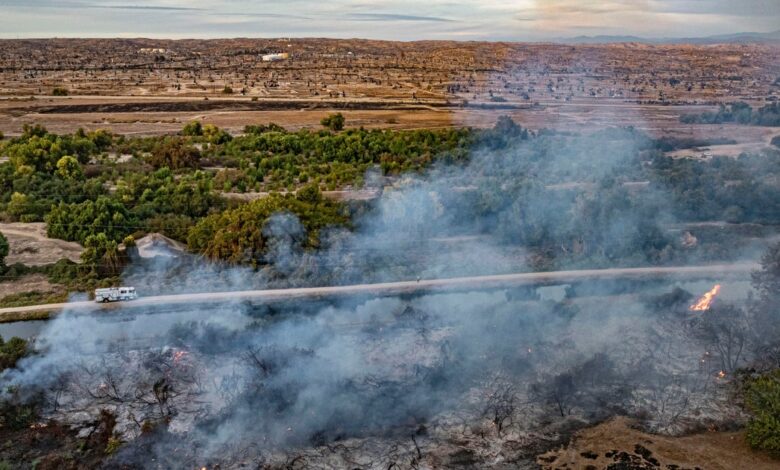Almost half of U.S. residents are exposed to unhealthy levels of air pollution, new report says. These are the areas that got an “F”

The latest State of the Air report released by the American Lung Association has painted a grim picture of air quality across the United States. With approximately 156 million residents living in areas that received failing grades for smog and soot pollution, the long-term health implications are concerning. The report, which analyzed air quality data from 2021 to 2023, revealed that 25 million more people are now breathing unhealthy levels of air pollution compared to the previous year. Shockingly, 46% of the U.S. population resides in areas that received failing grades for at least one of the three pollution measures studied.
Despite the significant progress made since the implementation of the Clean Air Act in 1970, which led to a 78% reduction in emissions of the six most common air pollutants, recent trends indicate a troubling increase in air pollution levels. Laura Kate Bender, an assistant vice president at the American Lung Association, attributed this rise to climate change exacerbating conditions for wildfires and extreme heat, which in turn contribute to higher levels of ozone pollution.
The report highlighted the cities with the most polluted air, with Bakersfield, California, ranking as the worst city for year-round and short-term particle pollution for the sixth consecutive year. On the other end of the spectrum, Casper, Wyoming, emerged as the cleanest city in terms of year-round particle pollution. The shifting concentration of poor air quality from western states to eastern states was noted in this year’s report, with climate change-induced factors like extreme heat, wildfires, and lack of precipitation playing a significant role in deteriorating air quality.
The EPA’s recent announcement of rolling back or revising 31 environmental rules and regulations, including national air quality standards and emission standards, raised concerns about the potential impact on air quality and public health. The American Lung Association warned that these proposed cuts could jeopardize decades of progress in improving air quality and expose individuals to dirtier air, posing serious health risks.
The health effects of air pollution are well-documented, with both ozone and particle pollution linked to various health problems such as asthma, heart attacks, lung cancer, and cognitive impairments. The disproportionate impact of air pollution on communities of color, particularly Black populations, due to systemic racism and environmental injustice was also highlighted in the report.
It is crucial for lawmakers to take decisive action to address air quality issues and protect public health. The American Lung Association’s report serves as a stark reminder of the urgent need to prioritize environmental protection and combat the detrimental effects of air pollution on our communities.





